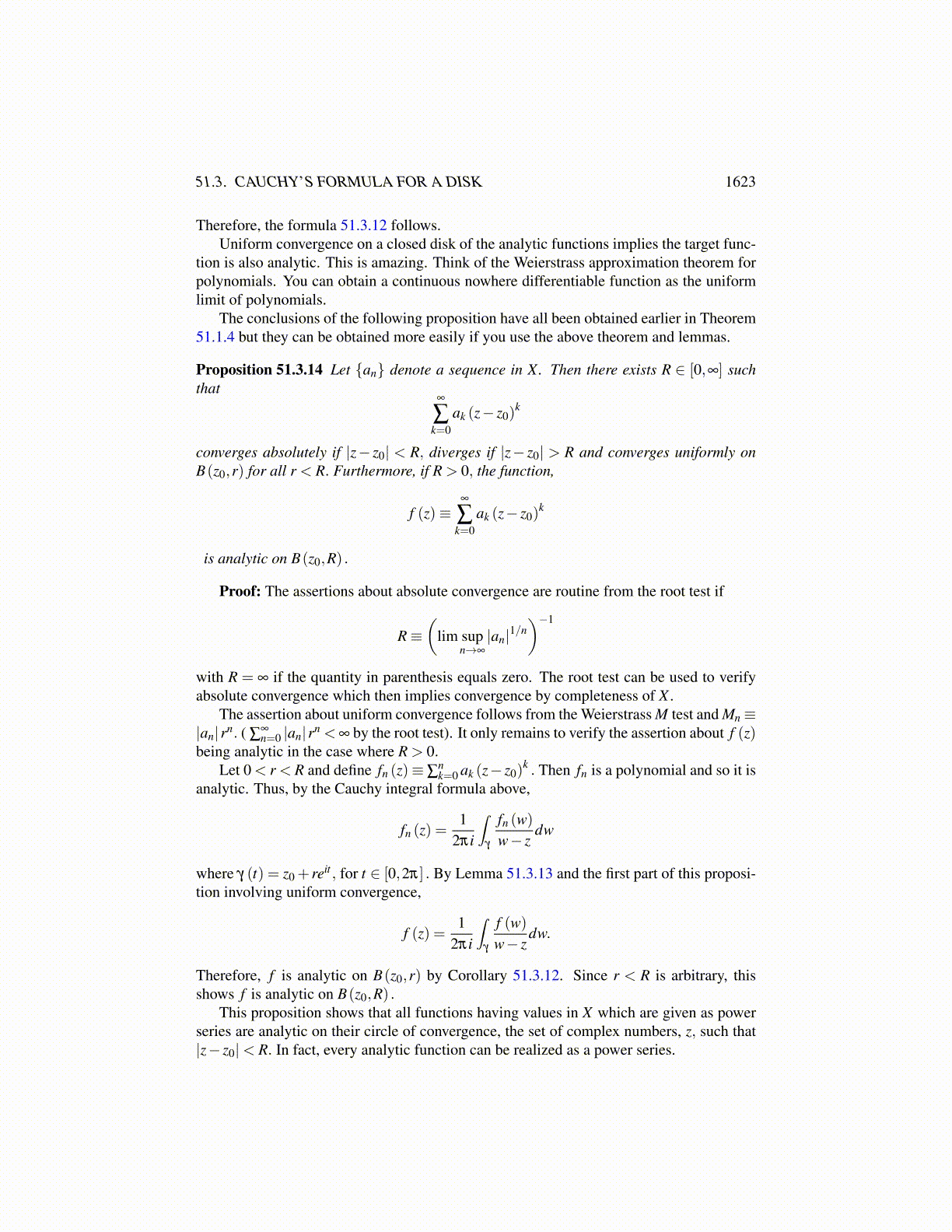
51.3. CAUCHY’S FORMULA FOR A DISK 1623
because∫ 2π
0 e−intdt = 0 if n > 0.Next consider the claim that g is constant. By Corollary 51.3.7, for α ∈ (0,1) ,
g′ (α) =∫ 2π
0
f ′(z+α
(z0 + reit − z
))(reit + z0− z
)reit + z0− z
rieitdt
=∫ 2π
0f ′(z+α
(z0 + reit − z
))rieitdt
=∫ 2π
0
ddt
(f(z+α
(z0 + reit − z
)) 1α
)dt
= f(z+α
(z0 + rei2π − z
)) 1α− f
(z+α
(z0 + re0− z
)) 1α
= 0.
Now g is continuous on [0,1] and g′ (t) = 0 on (0,1) so by Lemma 51.3.3, g equals aconstant. This constant can only be g(0) = 2πi f (z) . Thus,
g(1) =∫
γ
f (w)w− z
dw = g(0) = 2πi f (z) .
This proves the theorem.This is a very significant theorem. A few applications are given next.
Theorem 51.3.11 Let f : Ω→ X be analytic where Ω is an open set in C. Then f hasinfinitely many derivatives on Ω. Furthermore, for all z ∈ B(z0,r) ,
f (n) (z) =n!
2πi
∫γ
f (w)
(w− z)n+1 dw (51.3.10)
where γ (t)≡ z0 + reit , t ∈ [0,2π] for r small enough that B(z0,r)⊆Ω.
Proof: Let z ∈ B(z0,r) ⊆ Ω and let B(z0,r) ⊆ Ω. Then, letting γ (t) ≡ z0 + reit , t ∈[0,2π] , and h small enough,
f (z) =1
2πi
∫γ
f (w)w− z
dw, f (z+h) =1
2πi
∫γ
f (w)w− z−h
dw
Now1
w− z−h− 1
w− z=
h(−w+ z+h)(−w+ z)
and so
f (z+h)− f (z)h
=1
2πhi
∫γ
h f (w)(−w+ z+h)(−w+ z)
dw
=1
2πi
∫γ
f (w)(−w+ z+h)(−w+ z)
dw.